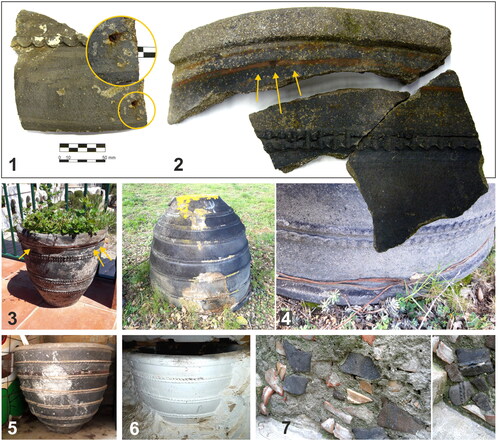Figures & data
FIG 1 Location map of pottery production in the Gavarres Mountains. The locations of greyware and redware workshops as well as clay quarries are indicated (1). Detailed sampling at the town of Quart is provided (2). The size of the sampling circles is proportional to the number of samples included in each location in both cases. Background ortophotograph is provided by the Cartographic Institute of Catalonia (Institut Cartogràfic de Catalunya, ICC).
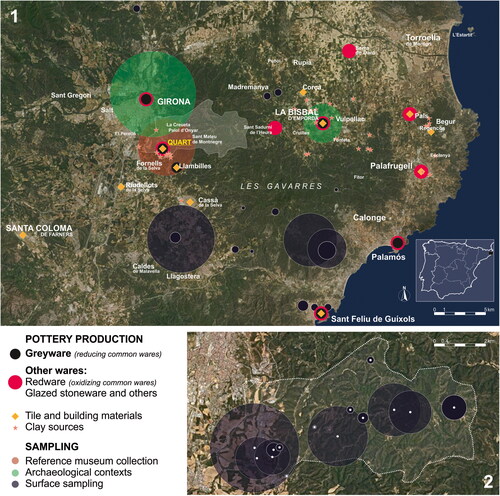
FIG 2 Graphic record of the examined vessels through drawing (1) and photograph (2), detailed description within the database (3) and morphometric calculation of variables (4).
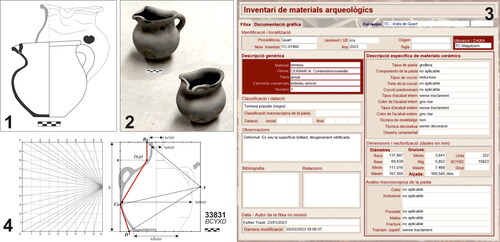
FIG 3 Results from Principal Component Analyses. Scatterplots comparing the first two components, with samples identified according to the vessel type (1) and archaeological context (2). Correlation matrix of variables considered within the analysis (3).

TABLE 1 Typological summary and classification of vessels from Quart according to their function and shape. Medium dimensions for each type are provided and standard deviation indicated in brackets. All dimensions are expressed in mm.
FIG 4 Typology of large storage containers from Quart. Basins (1), jars (2), bunghole jars (3) and washbasins (4).
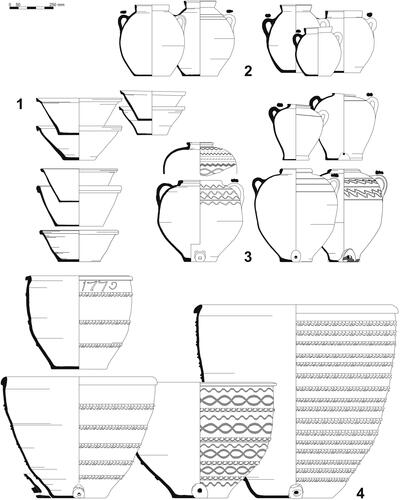
FIG 5 Typology of vessels for liquids and cooking pots. Wine (1) and oil measures (2), buckets (3), wine jars of type 1 (4) and type 2 (5), cruets (6), water jugs (7), pitchers without pouring rim (8), pitchers (9), boiling pots (10) and deformed or non-symetrical vessels (11).
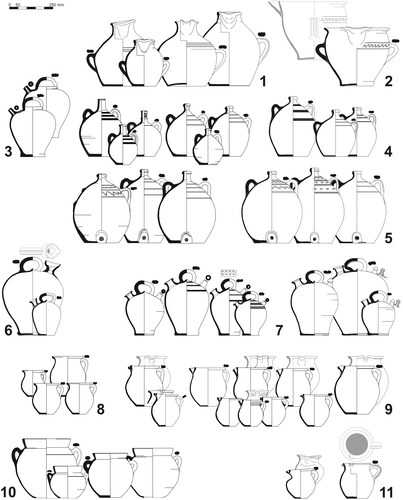
TABLE 2 Size standardization of pitchers. Medium dimensions for each size are provided and standard deviation indicated in brackets. All dimensions are expressed in mm.
FIG 6 Typology of uncommon or singular vessels for specific purpose. Stove (1), large jars (2), uncommon bunghole jar (3), heaters (4), braziers (5), bee-smokers (6), funnel (7), waterers (8), bottles (9) and costrels (10).

FIG 7 Micrographs and hand-specimen sherds representative of paste fabrics identified within the production of Quart. Different firing variants of the Coarse Sand-Tempered Fabric (MO-028) (1), Very Coarse Quartz and Feldspar Fabric (MO-044) (2), and Quartz and Mica-rich Fine Fabric (MO-046) (3). Significant features are labelled onto the photographs and micrographs. The label “rc” is an abbreviation for “relic coil”.
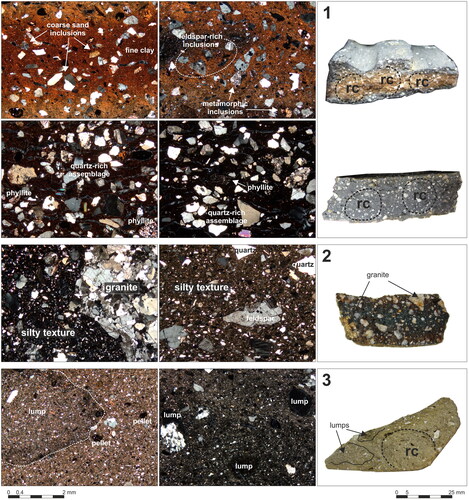
FIG 8 Location of clay sources in Quart (1) and lithological map of the area (2). Background ortophotographs provided by the Cartographic Institute of Catalonia (Institut Cartogràfic de Catalunya, ICC).
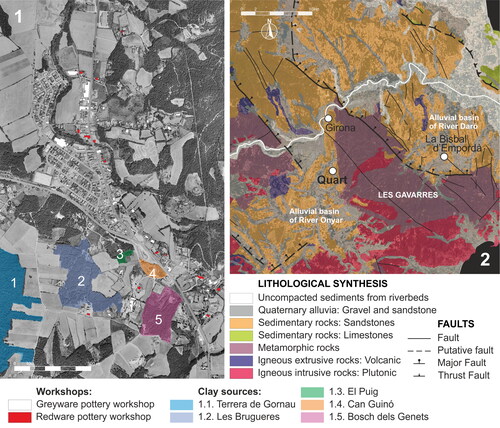
FIG 9 Repairs and endurance of cossis from Quart in the Gavarres area. Archaeological samples with remains of staples (1) and metal wire repairs (2), metal wires visible in cossis still in use (3) or abandoned (4), cossi still kept in Can Punton house (5), embedding of a cossi within the structure of a building (6), and fragments of greyware pottery recycled within the walls of a building in Girona (7).
